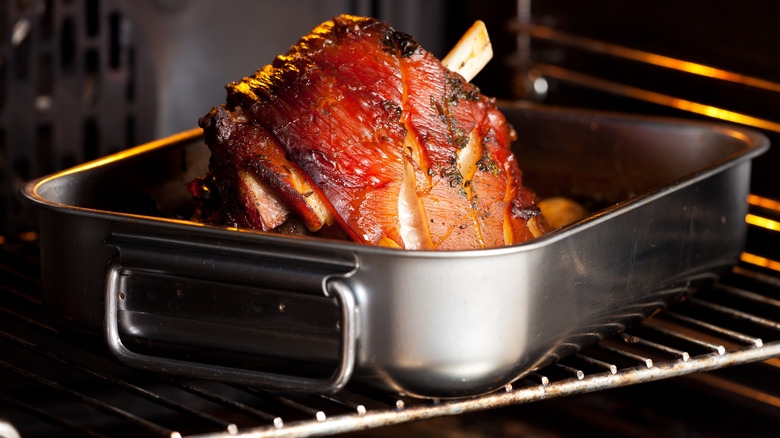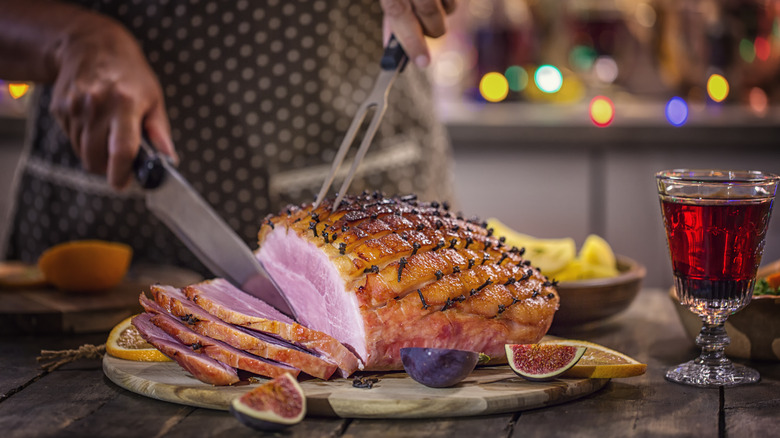The Baking Tip For Making Sure You Don't End Up With A Dry Holiday Ham
The holidays are a perfect time to whip up a ham for your friends and family. However, many home chefs find that the meat can become excessively dry when in the oven. In this case, the way you position the ham may be to blame. Ham should always be placed so the fat side is pointing upward while the cut side is resting against the pan or baking sheet. This method is best for retaining the natural juices within the ham while also creating a nice crispy crust on the fatty portions of the meat.
To go one step further, consider placing a sheet of aluminum foil over the ham while it's baking. The heat of the oven and lengthy baking time will cause juices to evaporate, which may result in a dry, flavorless dish. By using aluminum foil, you can trap these juices to ensure the meat remains moist and delicious once it's finished.
How to boost moisture and stop your ham from burning
There are lots of smart hacks you can use to ensure all parts of your holiday ham remain moist and delicious. There's a chance that the cut side of the ham, the side that's resting against the hot surface of the baking pan or sheet, will become dried out as it heats up. You can avoid this unwanted effect by pouring a liquid into the bottom of the cookware, which will keep the cut side perfectly moist.
You have two dependable options for giving the cut side of the baked ham a moisture boost. Chicken stock is an excellent choice, as it prevents dryness while also enhancing flavor. However, the taste of chicken stock is relatively subtle, so it won't drastically alter the flavor of the ham. You can also use a red wine, such as Merlot, which will impart some brightness and acidity to the meat while simultaneously retaining moisture.
A glaze or brine can also do the trick
While baked ham is tasty on its own, a glaze will elevate the inherent flavors to something truly unforgettable. There's a variety of glazes out there that pair beautifully with ham, which includes ingredients like maple syrup, mustard, orange, hot sauce, brown sugar, and even cola. Glazes introduce new flavors into the recipe, but they also lock in moisture while the ham is baking.
Some people also opt to brine their ham prior to cooking, which has an unbelievable impact on texture. Brining involves allowing the ham to soak in a solution for a specific period of time, usually about one hour per pound before you pop it in the oven. While brining solutions typically consist of salt and water, you can also incorporate other ingredients, such as garlic and herbs, for an amazing infusion of flavor. Although glazing and brining ham add a few extra steps to your food prep routine, creating a delicious holiday meal for your loved ones is more than worth it.


